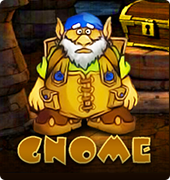| Виробник | GTECH Gaming |
| Кол-во линий | 4900 |
| Кол-во барабанов | 27 |
| Фриспіни | Відсутнє |
| Бонусний раунд | Відсутнє |
| Мобільна версія | Відсутнє |
| Гра на подвоєння | Так |
Грати в Франкенштейн в онлайн казино:
The Faerie Queene work by Spenser Britannica
In folklore and literature, the Fairy Queen or Queen of the Fairies is a female ruler of the fairies, sometimes but not always paired with a king. Depending on the work, she may be named or unnamed; Titania and Mab are two frequently used names.
The Fairy Queen Libretto
Numerous characters, goddesses or folkloric spirits worldwide have been labeled as Fairy Queens. The Tuatha Dé Danann and Daoine Sidhe of Irish mythology had numerous local kings and queens.

Oonagh, Una or Nuala was the wife of Finvarra or Fionnbharr, fairy king of western Ireland, although he frequently took other lovers. She was usually described living with Finvarra in his hill Cnoc Meadha, but was sometimes said to have a separate residence in Cnoc Sidh Una (Knockshegouna).
In one story following the model of the Fairies’ Midwife (Aarne-Thompson type 476), “Fionnbharr’s wife” (unnamed) is thoughtlessly cursed by a human girl who must then serve as her midwife. Fionnbharr's wife attempts revenge by giving the girl a belt that will cut her in two when she puts it on, but a fairy servant warns the girl in time.
The Faerie Queene Book I.
In the Vita Merlini, she is Morgen, the chief of nine magical sister queens. A kind and helpful fairy queen features in Alison Gross (Child 35), and a terrible and deadly fairy queen is the antagonist of Tam Lin (Child 39). Tam Lin's Fairy Queen pays a tithe to Hell every seven years, and Tam Lin fears that he will be forced to serve as a human sacrifice: An unnamed fairy queen appears in Thomas the Rhymer (Child 37), where she takes the titular character as her lover and leaves him with prophetic abilities.
Although the romances and ballads associated with Thomas the Rhymer have parallels to Tam Lin, including the tithe to Hell, this fairy queen is a more benevolent figure. In Thomas Cheyne's rebellion in January 1450, “the King of Fairies” (Regem de ffeyre) and “The Queen of Fairies” (Reginam de ffeyre) were among the aliases used by the (male) leaders. "Old Moss the fairy queen" appears in Shantooe Jest, a 19th-century poem by Thomas Shaw inspired by Yorkshire and Lancashire folklore. She flees the sound of the church bells to live with a giant named Todmore and they eventually settle in the location of Todmorden.

Later scholarship has disputed this; Nicneven's earliest known appearance was in Alexander Montgomerie’s Flyting (c.
1580) as a witch and worshiper of Hecate, and a separate character from the Elf Queen. In "The Merchant's Tale," by Geoffrey Chaucer, Pluto and Proserpine are described as the king and queen of the fairies.
The Faerie Queene Book I Cantos iii, iv & v Summary & Analysis.
This depiction is thought to have influenced William Shakespeare’s fairy rulers in A Midsummer Night’s Dream. A fairy queen Gloriana, daughter of King Oberon, is the titular character of the allegorical epic poem The Faerie Queene by Edmund Spenser. She is also called Tanaquill, derived from the name of the wife of Tarquinius Priscus.
She is a virtuous ruler written as an allegorical depiction of Queen Elizabeth.

 1.Українська Вулкан
1.Українська Вулкан  2.Вулкан Клуб
2.Вулкан Клуб  3.GMSlots
3.GMSlots  4.MaxBet
4.MaxBet  5.Eldorado Club
5.Eldorado Club  6.Joycasino
6.Joycasino 




